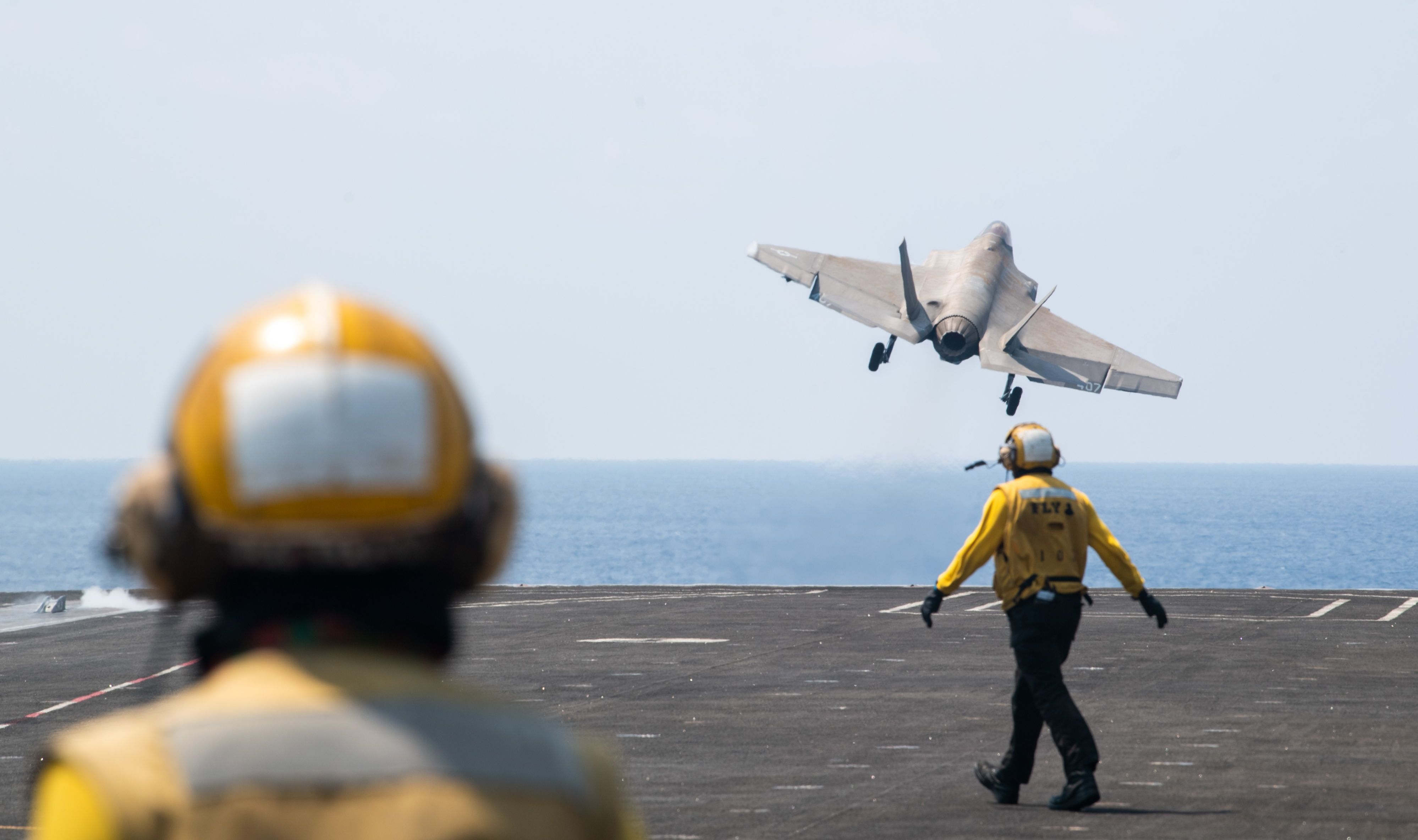Since October 7, 2023, the United States has quietly but significantly expanded its military presence across the Middle East, reversing the drawdown that followed its withdrawal from Afghanistan in 2021.
U.S. troop numbers in the region have risen from approximately 34,000 to nearly 50,000 as of late 2024, a level not seen since the first Trump term, in addition to a rapid increase in naval and aerial deployments. This shift reflects a strategic recalibration that appears driven less by long-term planning than by an improvised response to perceived Iranian threats, instability in the Red Sea, and domestic political pressure to “do something” without committing to a full-scale conflict.
While these movements have mostly evaded public scrutiny, they mark a significant increase in the regional U.S. force posture. Among the most visible developments has been the deployment of three aircraft carrier strike groups to waters near Yemen: the USS Dwight D. Eisenhower, the USS Carl Vinson, and the USS Harry S. Truman, as part of Operation Prosperity Guardian, a multinational task force launched in response to Houthi attacks on Red Sea shipping lanes.
These carriers have provided air cover for escalating strikes on Houthi targets and infrastructure following the group’s attacks on Red Sea shipping lanes in retaliation for Israel’s war in Gaza. Each carrier strike group also brings an escort of guided-missile cruisers and destroyers, layered with Aegis missile defense systems. Notably, the USS Carl Vinson brings with it a complement of 90 aircraft and 6,000 crew members, enhancing the U.S. Navy's operational capabilities in the region.
At the same time, six B-2 stealth bombers — representing nearly 30% of the U.S. Air Force's stealth bomber fleet — have been deployed to Diego Garcia, a remote but strategically located Indian Ocean base that offers a launchpad for long-range missions aimed at deterring Iran and projecting power over the Strait of Hormuz. It marks one of the largest such deployments to the base since the U.S. began building it in 1971.
There are also expanded deployments in Jordan and Cyprus that have been formalized through new agreements, as well as rotating Marine and Army units in Kuwait and Saudi Arabia. Approximately 13,500 U.S. forces are based in Kuwait, primarily at Camp Arifjan and Ali al-Salem Air Base, underscoring the strategic importance of these installations. Al Udeid Air Base in Qatar and Muwaffaq Salti Air Base in Jordan have served as key nodes for intelligence, surveillance, and reconnaissance (ISR) operations, as well as F-15/F-16 sorties. The intensification of ISR operations reflects a shift toward persistent surveillance as a form of deterrence, with unmanned aerial systems and signal intelligence platforms operating across the Gulf and Levant.
In March 2025, the Pentagon launched Operation Rough Rider, a significant expansion of its campaign against Houthi-controlled territories in Yemen, using the pretext of anti-piracy and maritime security to justify high-casualty airstrikes on military and logistical targets. Dozens were reported killed in an April 18 strike on the Ras Isa fuel port, drawing condemnation from humanitarian groups and accusations of strategic overreach.
After Oct. 7, 2023, the Biden administration framed its Middle East deployments as reactive and defensive, aimed at protecting U.S. personnel and deterring Iranian proxies. But the pattern of force movement tells a more complicated story in which deterrence has increasingly become a doctrine of inertia.
Rather than reducing risk, the buildup conveys a constant readiness to escalate without a clear strategy or endgame. Washington is burning high-end military resources to intercept low-cost Houthi projectiles. Each Houthi drone may cost as little as $2,000, while a single U.S. interceptor missile — like a SM-6 or Patriot — can run over $4 million.
The result is a tactical loop: the Houthis bleed U.S. stockpiles without altering the strategic balance. In that sense, the most recent surge of U.S. power recalls the post-9/11 “presence-as-policy” paradigm, where military footprint substitutes for political strategy. Compounding the concern is CENTCOM’s growing operational autonomy with field commanders often acting ahead of or outside civilian diplomatic timelines, underscoring a dynamic in which military posture increasingly drives foreign policy, not the other way around.
The Trump administration may believe this buildup buys leverage in future Iran negotiations or protects regional allies from Iranian retaliation. But the risk of miscalculation is growing. As more assets are concentrated in volatile theaters, the risks of accidental escalation increase, especially given the proliferation of drone strikes, maritime incidents, and cyber operations. Examples of possible flashpoints: a January 2024 Houthi missile strike on the USS Laboon and an Iranian drone swarm near U.S. bases in Bahrain.
What’s less clear is how long this posture can be maintained: the financial cost, logistical burden, and strategic ambiguity raise questions about sustainability, both in Washington and among increasingly anxious allies.
Editor's note: This article has been updated to reflect the latest data in U.S. troop deployments in Middle East.
















